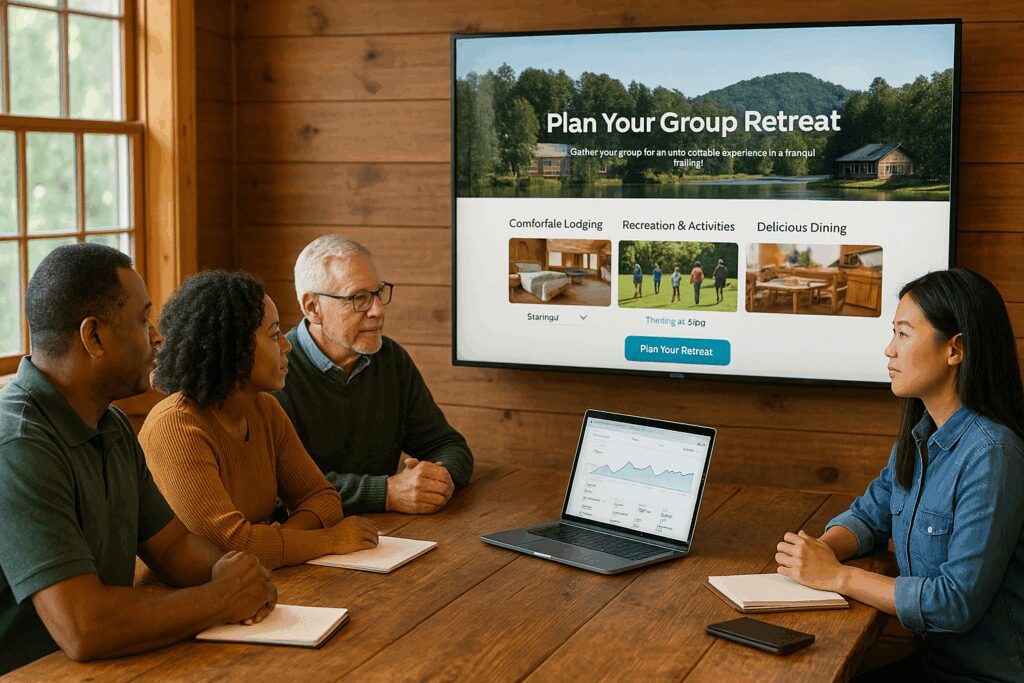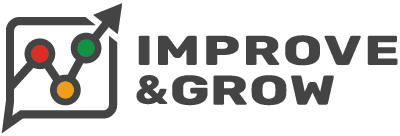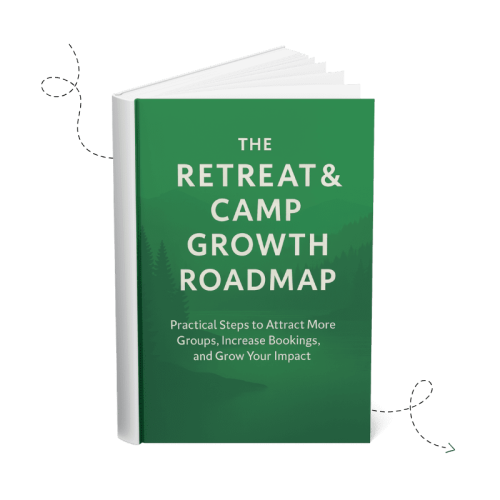Retreat & Camp Growth Roadmap Step 2: Build Your Platform
Introduction
In Step 1 of the Retreat & Camp Growth Roadmap, you defined your strategy — clarifying your audience, offerings, and messaging. Step 2 is where that clarity comes to life in a tangible, functional way. This is about more than just “having a website.” It’s about building a platform that works 24/7 to attract, capture, and manage the right inquiries so your team can focus on ministry, not manual follow-up.
Think of the difference like this:
- Before — A visitor lands on your site but can’t find the information they need, so they leave without contacting you. If they do inquire, the message sits in someone’s inbox for days. You never know which marketing effort brought them to you, so you can’t repeat what works.
- After — That same visitor finds a clear landing page built just for their group type, submits an easy form, and gets an immediate acknowledgment. Your CRM automatically logs the lead, assigns a follow-up task, and sends them helpful planning resources. You can see at a glance which campaign brought them in — and decide how to invest your next marketing dollar.
When done well, your platform integrates three critical components:
- A lead-ready website that invites action
- A lead management system that keeps everything organized
- Tracking and analytics that measure results and guide decisions
By the end of this step, you’ll have the infrastructure you need to consistently turn online interest into booked retreats.
Why This Focus Area Matters
Your platform is the digital foundation of your outreach efforts. Without it, you risk losing potential guests who visit your site, can’t find what they need, or never receive a follow-up after inquiring. With it, you create a streamlined path from first click to confirmed booking.
In today’s environment, retreat and camp leaders face:
- Short attention spans — leaders want answers fast
- Many options — you need to stand out quickly
- Seasonal booking windows — missing an inquiry can mean missing an entire year of opportunity
A strong platform helps you respond faster, track every lead, and make smart improvements over time. It’s about stewardship — making the most of every opportunity God sends your way.
Is This a Focus Area You Need to Work On Now?
- Do we have a website built specifically to generate retreat inquiries?
- Are all our inquiries stored in one place with clear follow-up steps?
- Can I quickly see which marketing activities are producing leads?
- Does our team know exactly what to do when a new inquiry comes in?
- Can we measure which types of groups convert best?
If you answered “no” to any of these, this focus area can help you bring greater clarity, alignment, and impact to your outreach.
How to Apply This Focus Area
Launch a Lead-ready Website
A lead-ready website is your retreat center’s most valuable digital asset. It’s more than a brochure — it’s a tool designed to engage group leaders, clearly present your offerings, and make it easy to inquire.
A strong lead-ready website will:
- Communicate your mission and unique value within seconds
- Showcase facilities, activities, and pricing with clarity
- Provide dedicated landing pages for key group types
- Offer multiple clear calls-to-action, especially inquiry forms
Example: One conference center redesigned their website to feature a retreat-specific section with photos, transparent pricing, and a simple inquiry form. Within weeks, they saw a measurable jump in inquiries from new audiences.
📖 Read the full guide: How to Launch a Lead-ready Website
Once your website can capture interest, the next step is making sure no lead slips through the cracks — and that’s where lead management comes in.

Setup Lead Management
Your website can generate leads, but without a solid system to track and manage them, you risk slow responses or missed opportunities. A CRM (Customer Relationship Management) system centralizes all inquiries, automates follow-ups, and gives your team a clear picture of the booking pipeline.
Key elements include:
- Capturing inquiries from all sources into one place
- Assigning follow-up tasks with deadlines
- Automating reminders and email sequences
- Tracking booking stages from first contact to confirmed retreat
Example: A retreat center experiencing a spike in inquiries struggled to keep up. By using a CRM with a visual sales pipeline, they prioritized follow-ups better and improved booking rates.
📖 Read the full guide: How to Setup Lead Management
With your leads organized, the final piece is knowing how well your efforts are working — and that requires accurate tracking and analytics.

Configure Tracking & Analytics
Without data, you’re guessing. With it, you can see which marketing activities produce leads, which pages convert best, and where to improve. Setting up tracking and analytics gives you the insight you need to make informed decisions.
Best practices include:
- Installing tools like Google Analytics and Google Tag Manager
- Setting up goal tracking for inquiries and bookings
- Creating dashboards to visualize performance
- Monitoring cost per lead from paid campaigns
Example: A retreat center discovered that most of their high-quality leads came from their youth retreat landing page. With this data, they invested more in promoting that page — and saw a 20% increase in youth group bookings.
Additional Tip: Consider using Google Looker Studio (formerly Data Studio) to create a simple dashboard that pulls in data from Google Analytics, Google Ads, and your CRM. This gives you one place to see the full picture of how people are finding and booking your retreats.
📖 Read the full guide: How to Configure Tracking & Analytics
When all three elements are in place, you have a platform ready to attract, capture, and track leads consistently — setting you up for long-term success.

Putting It All Together
The Build Your Platform step gives you the systems and tools you need to turn interest into actual inquiries — and eventually, confirmed bookings. Without a strong platform, even the best outreach efforts can fall flat because there’s no consistent way to capture, organize, and track leads.
Investing in your platform is an investment in sustainability and stewardship. When your website, lead management system, and analytics work together, you can serve guests more effectively, make data-informed decisions, and ensure no opportunity slips through the cracks.
And best of all? You’ll have the peace of mind that comes from knowing your marketing foundation is ready to handle growth without overwhelming your team.
If you are ready to strengthen your platform, we have developed in-depth guides for each of the three focus areas covered above. Each includes detailed context, practical examples, and downloadable worksheets to help you apply what you’ve learned to your ministry.
📖 Read the full article on Launching a Lead-ready Website
📖 Read the full article on Setting Up Lead Management
📖 Read the full article on Configuring Tracking & Analytics
Mini-Case Study
A Christian camp and retreat center in Pennsylvania was seeking to increase retreat inquiries. Their existing website was outdated, difficult to navigate, and lacked dedicated landing pages for their primary audience segments. Inquiries were scattered across multiple inboxes, and no one on the team had a clear view of follow-up status or lead sources.
The leadership team decided to overhaul their platform in three phases:
- Lead-ready Website – They redesigned their website with clear navigation, audience-specific landing pages for youth groups, women’s ministries, and leadership retreats, and multiple calls-to-action on every page.
- Lead Management – They implemented a CRM to centralize all inquiries and plan all events.
- Tracking & Analytics – Using Google Analytics they set up event tracking for form submissions and click-to-call actions. They used a reporting platform to create a one-page view of all key performance metrics.
Results:
In the 12 months proceeding these changes, inquiries increased by 32% compared to the same period the previous year. The improved platform not only increased bookings but also gave the staff more confidence and clarity in their daily work.
Practical Takeaways
- Audit your current website for clarity, visual appeal, and conversion paths
- Choose and set up a CRM to centralize lead tracking
- Implement automated email/SMS follow-up sequences
- Configure Google Analytics with clear goals and dashboards
- Review platform performance monthly and adjust strategies as needed
Final Thoughts & Next Steps
Step 2 of the Retreat & Camp Growth Roadmap, Build Your Platform, is about creating a sustainable, repeatable system for turning interest into inquiries and inquiries into bookings. It’s not flashy — but it’s essential. With a solid platform, every marketing effort you make will have a stronger impact.
Ready to Take the Next Step?
Your platform is built — now it’s time to help more people find it. Step 3, Establish Your Presence, is where you expand your visibility so the right groups discover and connect with your retreat center. With your website, lead management, and analytics in place, you’ll be ready to make the most of every visitor who finds you online.
If you found this helpful, here are four great next steps to continue your journey:
🧭 Move to the Next Step: Establish Your Presence
This is where you expand your visibility through local SEO, directory listings, and a stronger Google Business Profile so the right groups discover you. You’ll learn how to increase your reach and credibility without overloading your team.
[Read Establish Your Presence]
📘 Download the Retreat & Camp Growth Roadmap eBook
Get the full 3-stage system we use to help Christian retreat centers and camps grow with clarity and purpose.
[Download the eBook]
🌱 Learn More About How We Help Retreat Centers & Camps
We’re a Christian-owned marketing agency that helps ministries grow attendance, bookings, and impact through practical strategies rooted in clarity and stewardship.
[See How We Can Help]
🤝 Schedule a Free Discovery Call
Want help applying this to your unique situation? Let’s talk. We’ll explore where you are now, where you want to go, and how to take the next faithful step.
[Book a Discovery Call]
You don’t have to figure this out alone. Let’s build something meaningful—together.
Frequently Asked Questions
1. What’s the difference between a “regular” website and a lead-ready website?
A regular website often focuses on providing general information and may lack clear pathways for visitors to take action. A lead-ready website is intentionally designed to guide visitors toward inquiring or booking, with strong calls-to-action, dedicated landing pages for different group types, and messaging tailored to your ideal audiences. It also incorporates tools to capture leads, such as easy-to-use forms, and is optimized to display well on all devices, ensuring potential guests have a seamless experience.
2. Do I need an expensive CRM?
Not necessarily. Many retreat centers operate successfully for years with the CRM features that come with their retreat mangement system. Those that are looking to expand their ministry by stepping up their marketing often find that a a fully marketing-focused CRM may better serve their needs. The key is choosing a CRM that centralizes all your inquiries, automates follow-up tasks, and is easy enough for your staff to use consistently. Our clients choose LeadHub CRM for these reasons – it provides the features they need at a cost much lower than other popular CRMs.
3. How soon should I follow up on a new inquiry?
Industry best practice is within 24 hours — but faster is even better. A prompt response shows professionalism, care, and readiness to serve, which can be the deciding factor for a group leader choosing between multiple venues. Automations can help acknowledge the inquiry right away, even if a staff member follows up personally later with more details.
4. What metrics should I track in Google Analytics?
At minimum, you should track how many inquiries come through your website, your overall conversion rate, your top-performing pages, and where your traffic is coming from. These insights tell you which marketing channels are most effective and which pages are best at turning visitors into inquiries. Tracking should also include seasonal trends so you can plan campaigns at the right times.
5. Do I need both Google Analytics and Google Tag Manager?
Google Analytics collects and displays your data, while Google Tag Manager makes it easier to add and manage tracking without relying on a web developer for every change. While Tag Manager isn’t strictly required, it’s a valuable tool for efficiently tracking button clicks, form submissions, and other custom events on your site. Using both together allows you to gather more accurate and actionable data with less hassle.
6. How many landing pages should I have?
Ideally, you should have at least one dedicated landing page for each major group type you serve (for example, youth retreats, women’s ministries, leadership retreats, etc.). These pages allow you to speak directly to each audience’s needs and showcase the facilities, activities, and benefits that matter most to them. Over time, you can create more targeted pages for specific seasons, events, or packages to further improve relevance and conversion rates.
7. What if I get most of my bookings from referrals?
Referrals are valuable and should be nurtured, but relying solely on them can leave you vulnerable to seasonal fluctuations and market changes. A strong platform ensures that new audiences can find you and that referred guests have a professional, informative online experience that builds trust quickly. It also gives you tools to track referral sources so you can thank partners and encourage more word-of-mouth promotion.
8. Should I include pricing on my website?
Yes — transparent pricing builds trust and helps pre-qualify leads who are a good fit for your budget range. Many group leaders appreciate being able to plan realistically before contacting you, and it can reduce time spent fielding inquiries from groups who aren’t a financial match. You can still offer “starting at” prices or package ranges if you want flexibility while keeping the conversation open for customization.
9. Can I use AI in my lead management process?
Yes — AI tools can be particularly helpful for after-hours inquiries, lead qualification, and automated follow-ups. For example, an AI chatbot can answer common questions, schedule calls, or provide facility information while your team is offline. AI should be used to support, not replace, personal connection, ensuring guests still feel cared for and valued throughout the process.
10. How often should I review analytics?
For most retreat centers, a monthly review is ideal to monitor trends, check lead sources, and ensure all tracking is functioning properly. Quarterly deep-dives can help you spot bigger patterns, such as seasonal shifts in inquiry volume or changes in top-performing content. The key is consistency — making analytics review part of your regular rhythm so you can adjust strategies before small issues become big problems.





